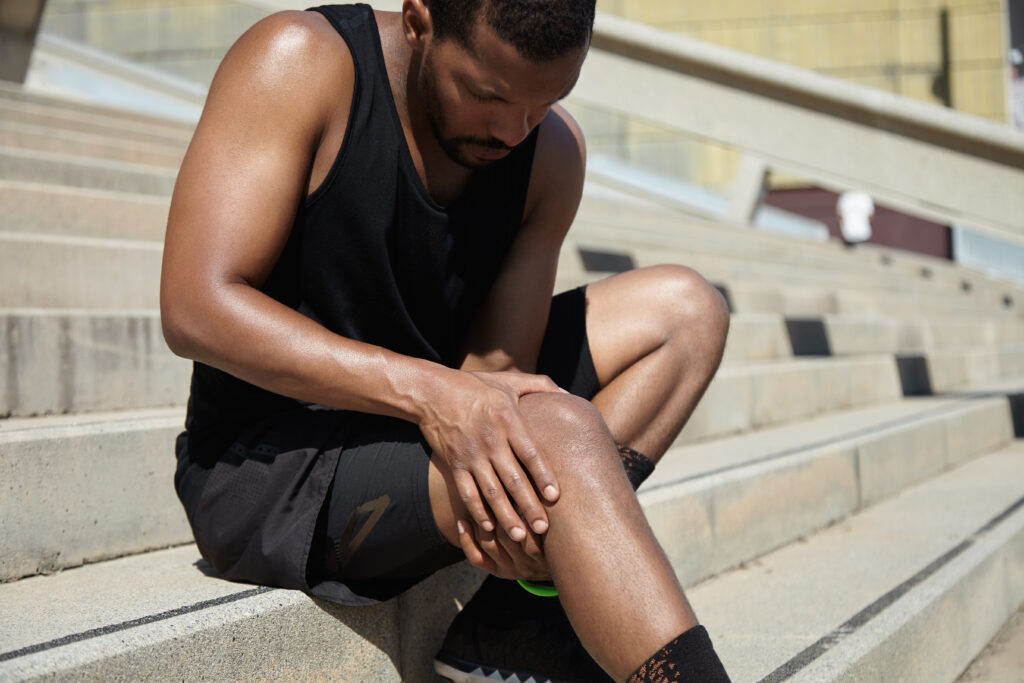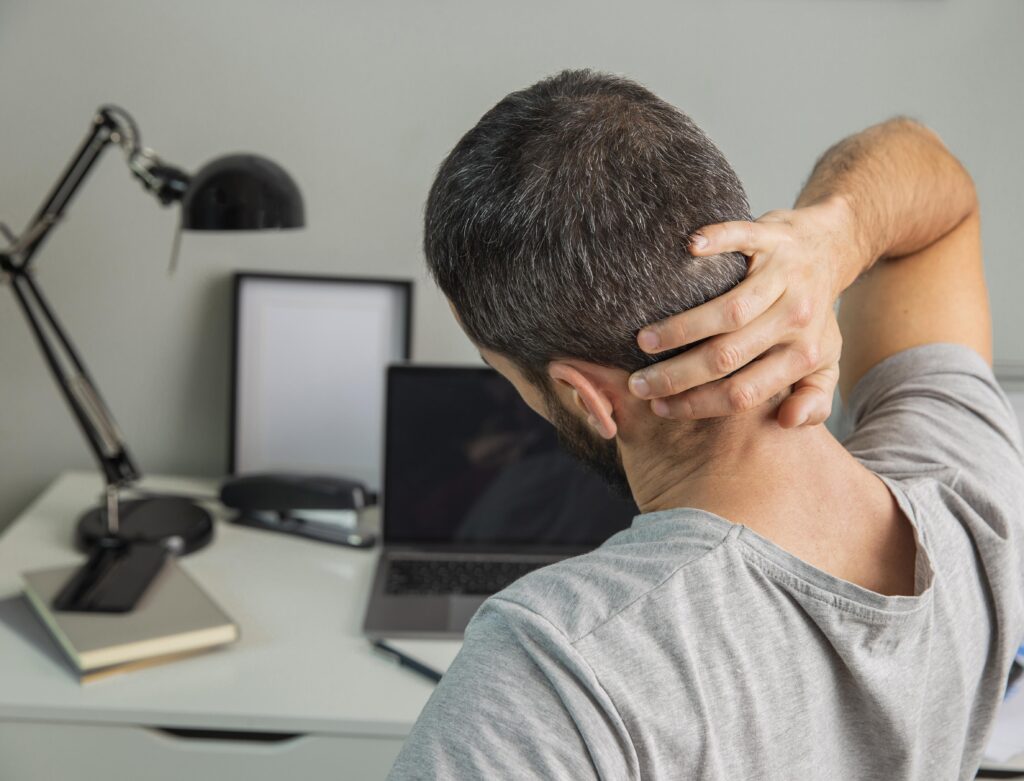If you're struggling with back pain in Charlotte, you're not alone, and there are effective strategies to help you find relief. From chiropractic care to personalized physical therapy, various options can cater to your specific needs. You might also consider the benefits of massage therapy or acupuncture to enhance your overall well-being. But what about the everyday adjustments you can make at home? Understanding these seven best ways could be the key to your recovery, and it all starts with knowing which methods resonate most with your lifestyle.
Chiropractic Care in Charlotte
Chiropractic care in Charlotte offers a hands-on approach to relieving back pain that many people find effective. When you visit a chiropractor, they'll assess your posture, spine alignment, and overall health to create a personalized treatment plan. This plan typically includes spinal adjustments, which help restore proper alignment, reduce pain, and improve mobility.
You might be surprised at how quickly you notice relief after just a few sessions. Chiropractors use various techniques, including manual manipulation, to target specific areas of discomfort. These adjustments can alleviate tension in your muscles and joints, providing a natural alternative to medication.
Moreover, chiropractic care emphasizes the importance of educating you about your body. Your chiropractor will likely teach you exercises and stretches to strengthen your back, helping you avoid future pain. This proactive approach empowers you to take control of your health and well-being.
Another benefit of chiropractic care is its focus on holistic treatment. Rather than merely masking the symptoms, chiropractors aim to identify the root cause of your pain. Whether it's poor posture, repetitive strain, or an injury, they'll work with you to develop an all-encompassing plan that addresses these underlying issues.
In Charlotte, the chiropractic community offers a range of services tailored to your needs. If you're struggling with back pain, consider reaching out to a local chiropractor. You may find that their hands-on techniques provide the relief you've been searching for, allowing you to return to your daily activities with confidence.
Physical Therapy Options
If you're exploring options to manage your back pain, physical therapy can be a valuable complement to chiropractic care. Physical therapists are trained to assess your condition and develop a personalized treatment plan tailored to your specific needs. This approach often incorporates a mix of exercises, stretches, and modalities designed to increase strength, flexibility, and overall function.
One of the primary goals of physical therapy is to alleviate pain while improving your mobility. You'll likely engage in targeted exercises that help strengthen the muscles supporting your spine, which can take pressure off vulnerable areas. Additionally, therapists may teach you proper body mechanics and posture techniques to prevent further injury.
Manual therapy techniques, such as joint mobilization and soft tissue manipulation, can also be part of your treatment. These techniques help improve circulation, reduce inflammation, and enhance your recovery. Moreover, your physical therapist might utilize modalities like heat, ice, ultrasound, or electrical stimulation to help manage pain and promote healing.
Consistency is key when it comes to physical therapy. Attending your sessions regularly and following your therapist's home exercise program can greatly impact your recovery.
Massage Therapy Benefits
Massage therapy offers several benefits for relieving back pain, making it an effective addition to your pain management routine. One of the key advantages is its ability to reduce muscle tension. When your muscles are tight, they can contribute to discomfort and pain. A skilled massage therapist can target these areas, helping to release tension and improve your overall comfort.
Another significant benefit is enhanced blood circulation. Increased blood flow helps deliver essential nutrients and oxygen to your muscles, promoting healing and recovery. This can be particularly beneficial after a long day of physical activity or if you've been sitting at a desk for extended periods.
Moreover, massage therapy can boost your mood and reduce stress levels. Chronic pain often leads to anxiety and depression, and regular massages can help alleviate these feelings. By promoting relaxation, you may find it easier to cope with your back pain and improve your overall quality of life.
You might also notice improved flexibility and range of motion after receiving massage therapy. This can help you move more freely and reduce the risk of further injury.
Lastly, many people find that regular massage sessions can serve as a preventative measure, helping to maintain a healthy back and avoid future pain episodes.
Exercise and Stretching Routines
To effectively relieve back pain, you should incorporate targeted stretching techniques and low-impact strength exercises into your routine.
These practices not only improve flexibility but also strengthen the muscles that support your spine.
Targeted Stretching Techniques
Targeted stretching techniques can be your best ally in relieving back pain and improving overall flexibility. Incorporating specific stretches into your daily routine can help alleviate tension in your back muscles, increase blood flow, and enhance your range of motion.
Start with the cat-cow stretch. On all fours, alternate between arching your back upwards and letting it sag downwards. This movement gently mobilizes your spine while loosening tight muscles.
Next, try the seated forward bend. Sit with your legs extended, and slowly reach toward your toes, feeling the stretch in your lower back and hamstrings. Hold for 15-30 seconds, breathing deeply.
Another effective stretch is the child's pose. Kneel and sit back on your heels, then stretch your arms forward on the ground. This pose relaxes your back and encourages gentle stretching of the spine.
Finally, don't forget about the spinal twist. While lying on your back, bring one knee to your chest and gently guide it across your body, keeping your shoulders flat on the floor.
Incorporate these stretches regularly, and you may find that they greatly help in reducing your back pain.
Low-Impact Strength Exercises
Incorporating low-impact strength exercises into your routine can greatly enhance your back health and overall strength.
These exercises are gentle on your joints while still effectively building muscle, which can help support your spine and alleviate pain.
Here are some great options to evaluate:
- Bridges: Lie on your back with knees bent and feet flat. Lift your hips toward the ceiling, squeezing your glutes at the top.
- Wall Sits: Slide down a wall until your knees are at a 90-degree angle. Hold this position for 20-30 seconds.
- Cat-Cow Stretch: Get on all fours and alternate between arching your back and rounding it, promoting flexibility in your spine.
- Seated Leg Lifts: Sit on a chair and lift one leg at a time, strengthening your hip flexors and lower back.
- Resistance Band Rows: Secure a band at waist height, hold both ends, and pull towards you, engaging your upper back muscles.
Make sure to start slow and focus on your form.
As you progress, you'll notice improved strength, stability, and reduced back pain.
Always consult a healthcare professional before starting a new exercise program.
Hot and Cold Therapy
Whether you're dealing with acute or chronic back pain, hot and cold therapy can provide significant relief. This approach utilizes the contrasting effects of heat and cold to help alleviate discomfort and improve mobility.
To start, heat therapy increases blood flow to the affected area. It relaxes and loosens tight muscles, making it great for stiffness and tension. You can use a heating pad, warm towel, or hot water bottle. Just make sure to apply heat for about 15-20 minutes at a time, and always place a cloth between the heat source and your skin to prevent burns.
On the other hand, cold therapy is effective for reducing inflammation and numbing sharp pain. Ice packs or cold compresses work best for this purpose. Apply them to the painful area for 15-20 minutes, allowing your skin to return to normal temperature before reapplying. Cold therapy is especially useful right after an injury or flare-up, as it can help reduce swelling.
For ideal results, you can alternate between hot and cold therapy. Start with heat to relax the muscles and follow it up with cold to minimize inflammation.
Remember to listen to your body—if either method exacerbates your pain, stop immediately.
Incorporating hot and cold therapy into your routine can be a simple yet effective way to manage back pain, helping you regain your comfort and mobility.
Acupuncture for Pain Relief
Acupuncture can be an effective method for relieving back pain by targeting specific points in your body.
This therapy not only helps reduce discomfort but also promotes overall well-being.
To get the most out of acupuncture, it's crucial to find a qualified practitioner who understands your needs.
How Acupuncture Works
Imagine a treatment that taps into your body's natural ability to heal itself; that's exactly what acupuncture does. This ancient practice involves inserting thin needles into specific points on your body, promoting balance and encouraging your body to respond to pain.
It's not just about the needles; it's about how they interact with your body's energy flow.
Here's how acupuncture works:
- Stimulates Nerve Endings: The needles stimulate nerve endings, triggering your body to release natural pain-relief chemicals.
- Increases Blood Flow: Increased circulation brings oxygen and nutrients to the affected area, aiding recovery.
- Reduces Inflammation: Acupuncture helps to decrease inflammation, alleviating pressure on nerves and tissues.
- Releases Endorphins: This practice boosts endorphins, your body's natural painkillers, providing immediate relief.
- Promotes Relaxation: Acupuncture encourages relaxation, reducing overall stress, which can contribute to chronic pain.
Benefits for Back Pain
Back pain can feel like a weight pressing down on your daily life, but acupuncture offers a powerful solution. This ancient practice not only targets the pain but also promotes overall well-being. By stimulating specific points on your body, acupuncture can help release endorphins, your body's natural painkillers. You'll often find that after a session, the intensity of your back pain decreases considerably.
Acupuncture can also enhance blood circulation, which is essential for healing. Improved circulation means that nutrients and oxygen flow more freely to damaged tissues, speeding up recovery. Additionally, acupuncture can reduce inflammation, a common contributor to back pain, allowing you to move more freely without discomfort.
Another benefit is its ability to alleviate stress and tension, factors that can exacerbate back pain. You may notice that regular sessions lead to a more relaxed state of mind, making it easier to cope with daily challenges.
Finally, combining acupuncture with other treatments can provide a holistic approach to managing back pain. If you're looking for a natural, effective way to relieve your discomfort, give acupuncture a try. You might just find the relief you've been seeking.
Finding Qualified Practitioners
When you're seeking relief from pain, finding a qualified acupuncture practitioner is crucial for effective treatment.
The right expert can make a significant difference in your recovery and overall experience. Here are some tips to help you find the best practitioner for your needs:
- Check Credentials: Verify they're licensed and certified by a recognized acupuncture board.
- Experience Matters: Look for someone with experience specifically in treating back pain.
- Read Reviews: Look up testimonials and reviews from previous patients to gauge their effectiveness.
- Consultation: Schedule an initial consultation to discuss your pain and treatment goals.
It's a chance to assess their approach.
– Comfort Level: Trust your instincts; you should feel comfortable and supported during your sessions.
Ergonomic Adjustments at Home
Making ergonomic adjustments at home can greatly reduce back pain and improve your overall comfort.
Start by evaluating your workspace. If you work from home, invest in an adjustable chair that supports your lower back. Your feet should rest flat on the floor, and your knees should be at a 90-degree angle. A desk at the right height is essential; your elbows should also form a right angle while typing. If you can't adjust your desk, consider using a keyboard tray to achieve the proper height.
Next, pay attention to your computer screen. It should be at eye level to prevent you from straining your neck. If you're using a laptop, prop it up on a stand or use an external monitor to achieve the correct height. Don't forget about your phone—consider using a hands-free device to avoid hunching over.
When sitting for long periods, take breaks every hour. Stand, stretch, or walk around to relieve tension in your back. If possible, try a sit-stand desk to alternate between sitting and standing throughout the day.
In your living space, verify that your couch and chairs offer good support. Use cushions or lumbar rolls to maintain the natural curvature of your spine.
Finally, be mindful of how you lift heavy objects; bend at the knees and keep the load close to your body to prevent strain.
Implementing these ergonomic adjustments can lead to significant relief from back pain and enhance your daily comfort.
Conclusion
In Charlotte, you've got plenty of effective options to tackle back pain. Whether you choose chiropractic care, personalized physical therapy, or a soothing massage, each method can make a difference. Don't forget the power of exercise, hot and cold therapy, and acupuncture for added relief. By making ergonomic adjustments at home, you can create a supportive environment for your spine. Find the right practitioners, and take charge of your recovery journey today!



